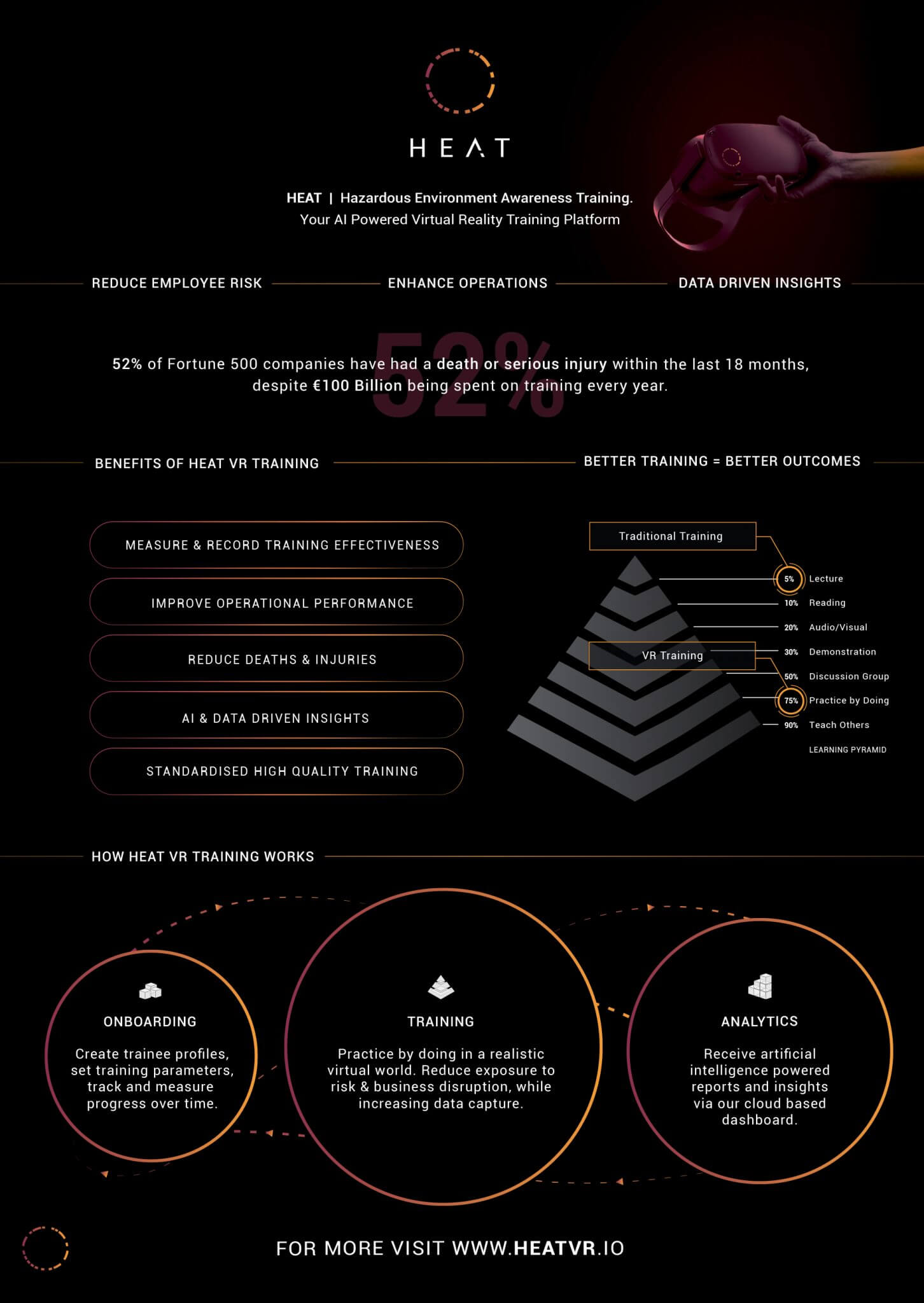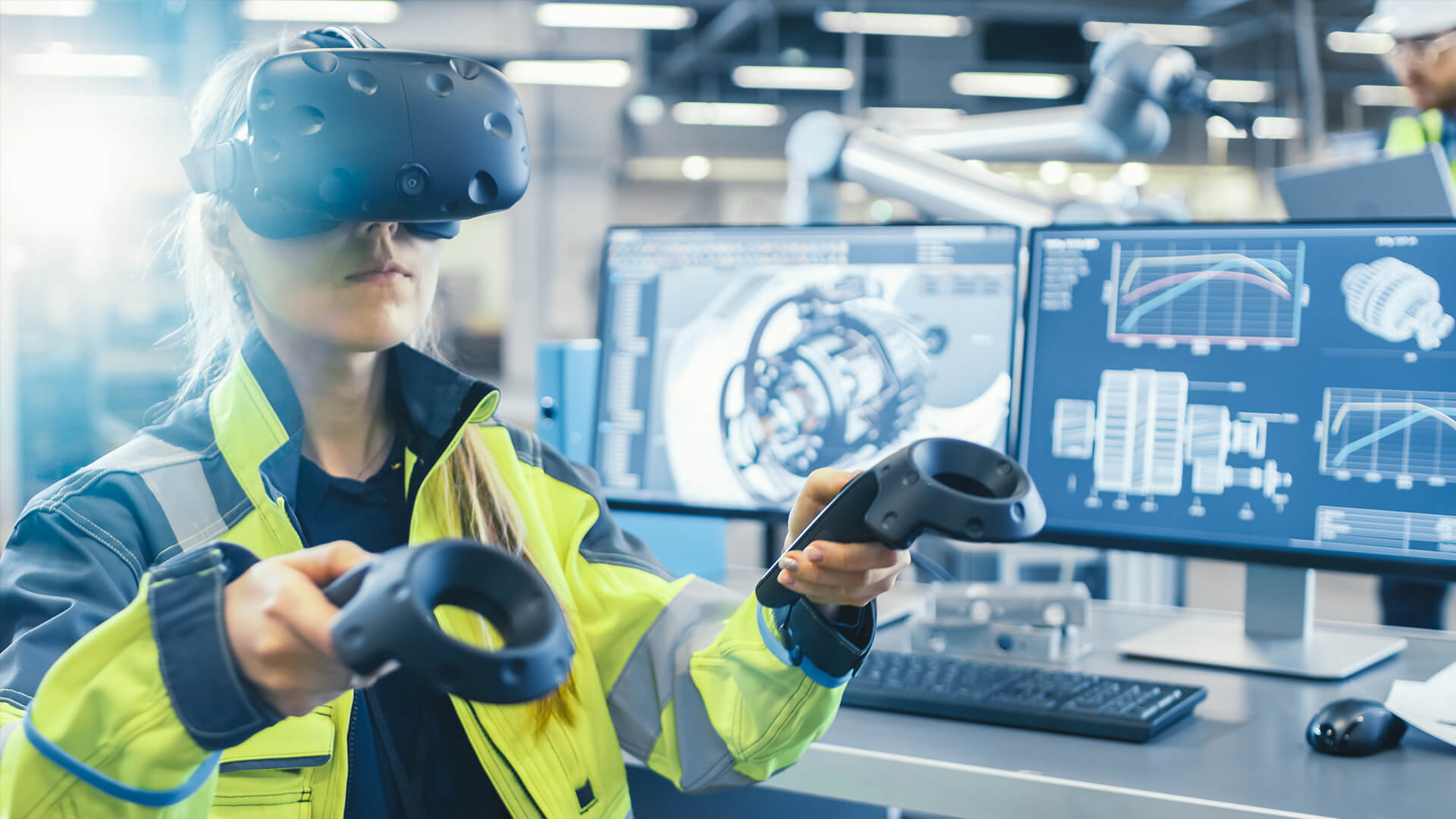There can be little doubt that technology has bought about revolutionary change across a plethora of industries, becoming one of the key drivers of growth, innovation and development on the global business landscape. It wouldn’t be such a leap to suggest that VR is one of the most promising of these new technologies that has entered the market in the last couple of decades, with wide-reaching effects that are only now just being realised.
One area that is seeing early utilisation – and, crucially, impressive results- is in health, safety and training. We spoke with Pat O’Connor, Managing Director of VRAI, to find out more.
As a content creation company that specialises in capitalising on the unique benefits of augmented and virtual reality, VRAI is at the very forefront of an emerging and ever-growing industry. Moreover, through their work with large organisation such as Samsung, IAG and the United Nations, VRAI are well-placed to notice new trends before they become industry-defining goliaths and, more importantly, they have become adept at solving real business problems with technology-centric solutions.
Combining these two advantages, VRAI have developed a new training platform that uses their considerable experience to reinvent best practices, as Pat explains. “Hazardous Environment Awareness Training, or HEAT, is an AI powered VR training platform that improves training effectiveness, reduces risk to employees and enhances operational outputs by reducing human error. Our HEAT VR training platform has 3 main elements – onboarding, training and analytics.
“In the onboarding phase, trainee profiles are created which captures demographic information such as age, years of service, whether the individual is salaried or contract, and data of that nature. During the training phase, the VR headset acts as an IOT device capturing rich datasets on the trainee movement and performance. In our next iteration of our HEAT training product we are building in biometric sensors that will then allow clients to not only measure how people perform tasks, but also how they feel while carrying out these tasks. Finally, in the analytics phase, all of the data captured in the previous phases is analysed via our cloud-based AI platform providing deep insights into training effectiveness and employee performance. In effect, the more training clients conduct the more data that is produced and the greater the organisational learnings.”
“This product is focused on reducing deaths and serious injuries in the workplace while improving operational performance.”
Pat continues, moving to discuss how VR, as a technology, has the potential to change huge swathes of the business world, in numerous industries, fields and sectors. At the crux of all this is training, which comes at a colossal cost for the world’s most successful companies. As Pat explains, there’s simply a better, more effective way than the current approach to this most essential of everyday elements. “The Fortune 500 spent approximately $100Bn on training in 2018, with over $11bn of that spent on safety training. Over half of these companies have had an employee death or serious injury occur in the previous 18 months.
“Considering the amount of money being spent, the problem is not the amount or length of training, it is the effectiveness of the training. We know, today, that the vast majority of training is delivered via lectures, or lecture-based training. This type of training is highly inefficient, ineffective and does very little to prepare people for the realities of carrying out the work in the ‘real world’ and in a real environment.”
HEAT, then, represents an alternative to current training techniques which represent a vast financial burden on industries where the money is, to put it simply, better spent elsewhere.

Understandably, healthcare is one industry where the effectiveness of VR is swiftly being realised. “Traditional training often required experienced staff to take time to train their more junior colleagues. With VR-based training, we can codify the knowledge of the more experienced colleagues to free them up to focus on healthcare delivery. By undergoing training that better reflects the real-world working environment, it better prepares new staff so that, when they start work, they are less dependent on experienced staff to show them the topes. The research shows, more effective training leads to more effective outcomes.
“Of particular note is the effectiveness of simulation training, which is already used a lot in the medical industries. In this, VR training is an obvious complimentary service. Simulators can be expensive to use, are generally limited in availability and are only available to students on the college campus. VR training allows you to empower your trainees to train themselves with the system acting as the trainer, capturing their performance and guiding them. The added bonus for both trainer and trainee is the additional data-driven insights that can drive performance improvement. In fact, in some colleges, it is being used to gamify training to create “leader boards,” Pat adds.
Yet, despite the runaway successes of VR and the promise of the future change that HEAT is sure to bring, there’s still obstacles to overcome. Here, in his closing comments, Pat enlightens us about the journey that lies ahead for VR and like technologies. “As with any new technology, companies need to be clear on the business case for adoption – it’s the race to be second. Thankfully the benefits of VR training are now becoming more obvious for clients, particularly when it is available on an AI powered platform such as HEAT that can be integrated into existing LMS systems. Now companies are clear on the business case, it’s about finding the best solution.
“Finally, scalability of training solutions is also key as our client companies are generally large cap firms with a global footprint. This means the system must be available in multiple sites, in multiple languages and with bespoke, tailored training.”
“We see VR as the laboratory which enables organisations to gather rich data on how their people perform and train in order to improve safety and operational efficiency.”

































